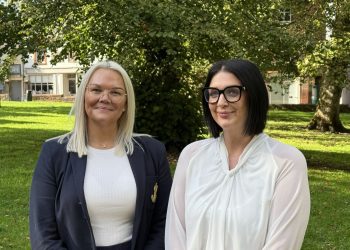Landmark Supreme Court Ruling Clarifies Asset Division in Divorce: Standish v Standish (2025) UKSC 26
July 3rd 2025By Joanne Grey Senior Associate Solicitor in our Family Law team.
Yesterday, the UK Supreme Court handed down a long-awaited decision in Standish v Standish [2025] UKSC 26, a case that will shape how courts approach the division of wealth on divorce—particularly where one party enters the marriage with significant pre-acquired assets.
The ruling provides crucial clarification on the boundary between matrimonial and non-matrimonial property and narrows the circumstances in which the “sharing principle” will apply to wealth acquired outside the marriage. For family solicitors and clients alike, this decision marks a significant moment in the evolution of financial remedy law.
The Facts: Wealth, Marriage and a Tax-Driven Transfer
Clive Standish, a high-net-worth retired banker, married Anna Standish in 2005.
In 2017, as part of a tax planning exercise intended to reduce inheritance tax exposure, Clive transferred around £80 million of investments into Anna’s sole name. These assets were to be settled into a trust for their children, though no trust was ever created.
The couple separated in 2020.
During the financial remedy proceedings, the fate of the 2017 Assets—whether they were matrimonial or non-matrimonial—became central to the case.
Anna argued they had been shared during the marriage and should therefore be divided equally under the sharing principle.
Clive contended they remained non-matrimonial and thus outside the sharing claim.
The Legal Journey: From the High Court to the Supreme Court
At first instance, the High Court found that although the assets originated from Clive’s pre-marital wealth, the 2017 transfer into Anna’s name had effectively “matrimonialised” them. On that basis, the court applied a 60/40 division in Clive’s favour, awarding Anna approximately £45 million.
The Court of Appeal reversed that decision, finding that only around 25% of the 2017 Assets constituted matrimonial property—the portion that had accrued or grown during the marriage.
Anna’s award was significantly reduced to £25 million.
Anna appealed to the Supreme Court. In a unanimous judgment, the Court dismissed her appeal and upheld the Court of Appeal’s decision.
The Supreme Court’s Five Key Clarifications
In a joint judgment delivered by Lord Burrows and Lord Stephens, the Court laid out five central principles:
- Matrimonial and Non-Matrimonial Property Are Distinct
Non-matrimonial property (e.g. assets acquired before marriage, gifts, or inheritance) should not be subject to the sharing principle unless it has been clearly transformed into matrimonial property. - The Sharing Principle Applies Only to Matrimonial Property
Equal division of wealth is the default for property accrued through joint endeavour during the marriage—but not for pre-marital or non-matrimonial property. - Equal Sharing Remains the Starting Point for Matrimonial Property
Where property is deemed matrimonial, courts should start from a position of 50/50 division, subject to fairness and contribution. - Matrimonialisation Must Be Demonstrated Through Conduct
Simply changing legal ownership (e.g. transferring to a spouse’s name) does not by itself make non-matrimonial property matrimonial. There must be evidence of joint treatment over time. - Tax Planning Does Not Equal Intent to Share
Where transfers are made for tax efficiency or inheritance purposes—as in this case—they do not automatically indicate an intention to treat assets as jointly owned.
Application to the Standish Case
The Court concluded that only 25% of the 2017 Assets were matrimonial, based on the period during which they grew through joint marital endeavour. The remaining 75% were traced back to Clive’s pre-marital wealth and not treated as shared during the marriage. Importantly, the Court found that the tax-driven nature of the transfer did not suggest shared ownership or intention.
As a result, Anna’s final award of £25 million represents a 50% share of the matrimonial property—consistent with the sharing principle—while the non-matrimonial portion remained untouched.
What This Means for Family Law
This decision offers long-needed clarity in an area that has generated considerable uncertainty. It confirms that:
- Non-matrimonial property is not subject to sharing unless matrimonialised.
- Transferring ownership to a spouse, even of large sums, does not automatically create shared property.
- Context, intention, and actual use of the asset matter far more than title.
Practitioners representing high-net-worth individuals will take comfort in the fact that courts will respect the provenance of wealth brought into the marriage. However, the decision also underscores the importance of clear documentation, intention, and the strategic use of nuptial agreements.
Practical Implications for Clients
- Wealth Protection
Individuals entering a marriage with significant pre-acquired assets should seek advice on prenuptial or postnuptial agreements. The courts are now more likely to uphold asset boundaries if clearly established and respected in practice. - Tax Planning Must Be Documented Carefully
Where assets are transferred for inheritance or tax planning, it is essential to retain evidence of the purpose and intended ownership structure, especially if placed in a spouse’s name. - Asset Use and Conduct Matter
Even non-matrimonial property can become shareable over time if used and treated as a family resource. Transparency and legal advice are vital at every step.
Final Thoughts
The Standish judgment marks a significant reaffirmation of the principle that not all assets should be thrown into the marital pot. While this may signal a shift toward a more conservative approach to asset division, it also opens the door for greater predictability and fairness—particularly for individuals with inherited or pre-marital wealth.
For clients, the key takeaway is this: how you treat your wealth during marriage may matter as much as how and when you acquired it. And for practitioners, Standish provides a powerful framework for advising clients on asset protection, tax planning, and financial risk at the outset of a relationship.
If you would like to discuss how this decision may impact your situation, or would like advice on safeguarding your assets, please contact us.
This article is for information only and does not constitute legal advice. For personalised advice, please contact Joanne on 01228 516666 or click here to send her an email.








